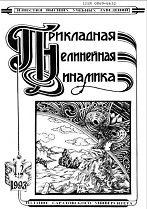|
This article is cited in 3 scientific papers (total in 3 papers)
APPLIED PROBLEMS OF NONLINEAR OSCILLATION AND WAVE THEORY
Hybrid SIRS model of infection spread
A. V. Shabunin
Saratov State University, Russia
Abstract:
Purpose of this work is to build a model of the infection spread in the form of a system of differential equations that takes into account the inertial nature of the transfer of infection between individuals. Methods. The paper presents a theoretical and numerical study of the structure of the phase space of the system of ordinary differential equations of the mean field model. Results. A modified SIRS model of epidemic spread is constructed in the form of a system of ordinary differential equations of the third order. It differs from standard models by considering the inertial nature of the infection transmission process between individuals of the population, which is realized by introducing a "carrier agent" into the model. The model does not take into account the influence of the disease on the population size, while population density is regarded as a parameter influencing the course of the epidemic. The dynamics of the model shows a good qualitative correspondence with a variety of phenomena observed in the evolution of diseases. Discussion. The suggested complication of the standard SIRS model by adding to it an equation for the dynamics of the pathogen of infection presents prospects for its specification via more precise adjustment to specific diseases, as well as taking into account the heterogeneity in the distribution of individuals and the pathogen in space. Further modification of the model can go through complicating the function which defines the probability of infection, generation and inactivation of the pathogen, the influence of climatic factors, as well as by means of transition to spatially distributed systems, for example, networks of probabilistic cellular automata.
Keywords:
Population dynamics, SIRS model, dynamical systems.
Received: 29.05.2022
Citation:
A. V. Shabunin, “Hybrid SIRS model of infection spread”, Izvestiya VUZ. Applied Nonlinear Dynamics, 30:6 (2022), 717–731
Linking options:
https://www.mathnet.ru/eng/ivp507 https://www.mathnet.ru/eng/ivp/v30/i6/p717
|

| Statistics & downloads: |
| Abstract page: | 40 | | Full-text PDF : | 10 | | References: | 8 |
|




 Contact us:
Contact us: Terms of Use
Terms of Use
 Registration to the website
Registration to the website Logotypes
Logotypes








 Citation in format
Citation in format 
